Aside from personal taste, it can be hard to determine if curtains or blinds are the way to go and what has the capacity to boost the distinct areas of your home. Curtains and blinds are crucial for any makeover, adding significant value to your home and atmosphere, softness, depth, a punch of color, and even the ability to change the temperature of the room and the home's energy efficiency.
Although blinds are now just as standard as curtains, curtains are still preferred for living rooms and bedrooms. When your home needs an aesthetic recharge while retaining a room's classic feel and look, curtains are the way to go.
Although blinds may be more useful in a smaller room, curtains will provide superior light control. If you choose a blind, make certain that it is wider and longer than the window to reduce light drift. To prevent light from escaping, curtains should be positioned close to the ceiling or, even better, with a short valance or cornice above.
This eternal debate on what is better between curtains and blinds can confuse you and make your decisions a little stressful. So, let us help you get a more detailed understanding of the differences between curtains and blinds.
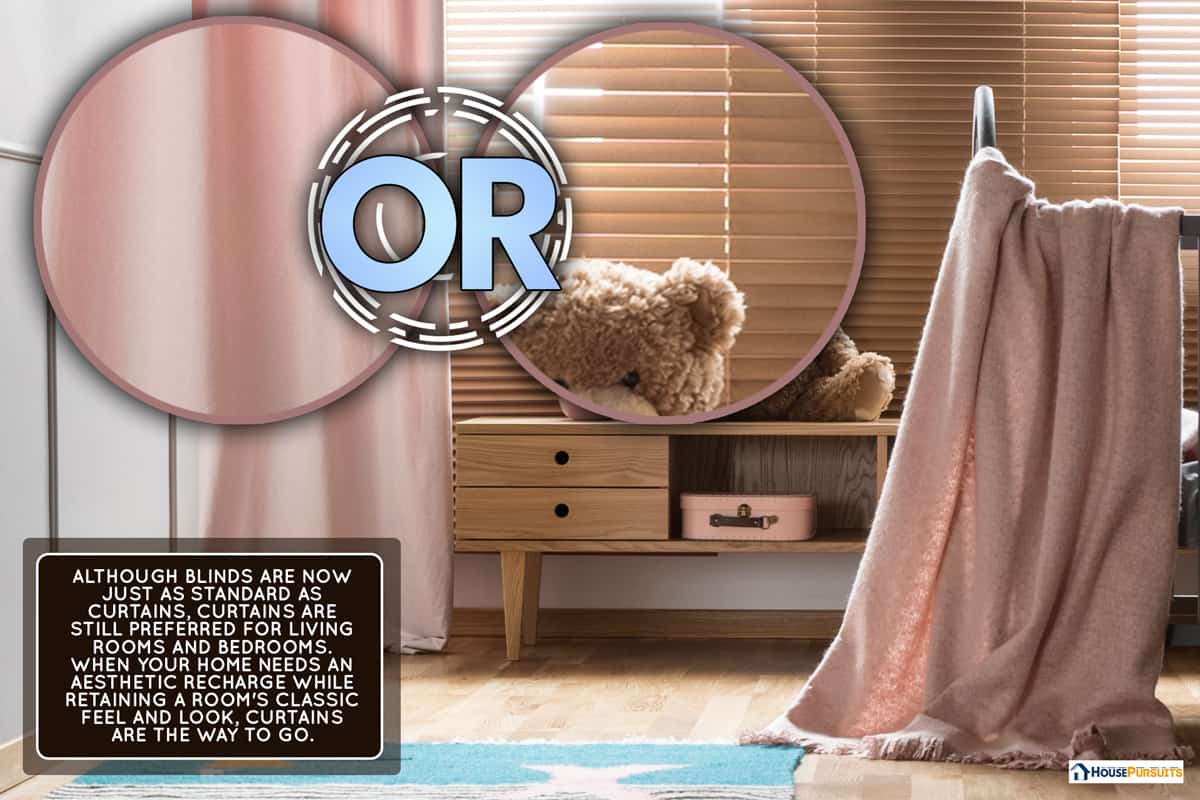
The Difference Between Blinds and Curtains
The extent to which they cover the window is the primary distinction between curtains and blinds. While curtains are typically draped in front of windows and frequently hang to the floor, blinds directly cover the window.
What Blinds Are
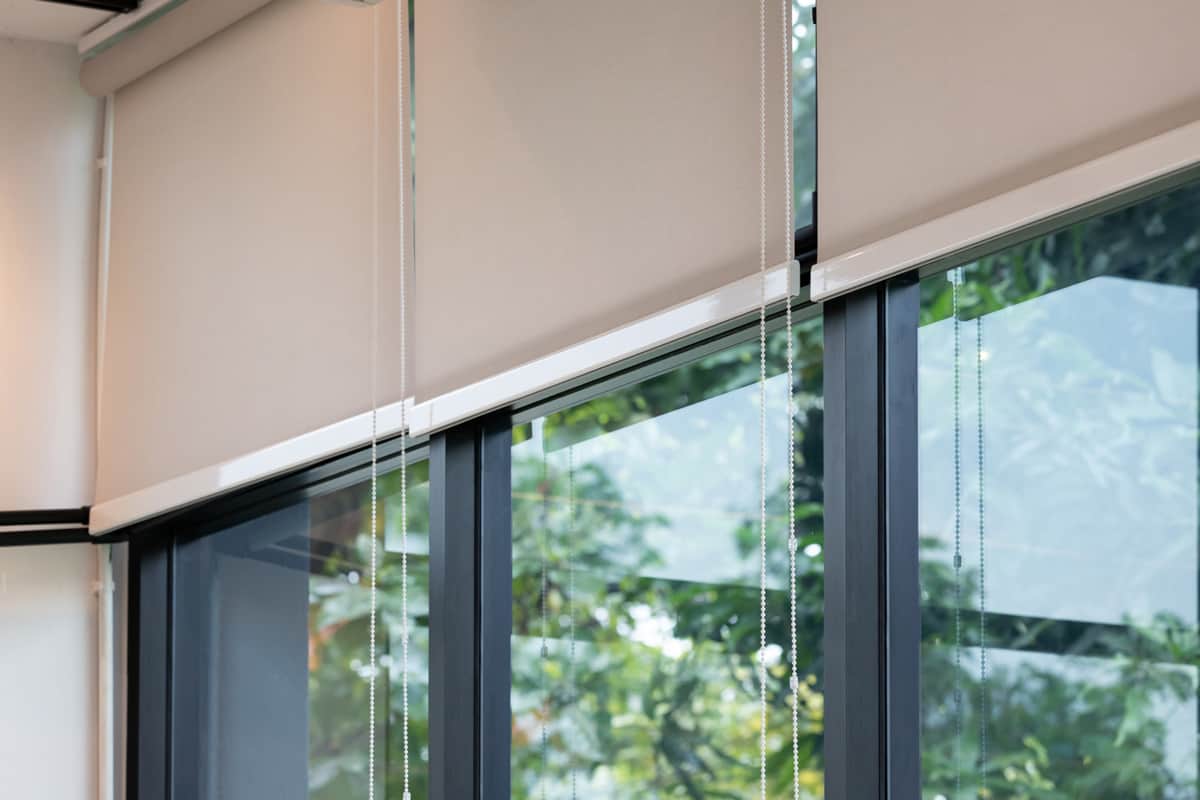
Blinds are unique window treatments. A window blind normally consists of a number of long slats, either vertically or horizontally. The slats, usually made of wood, plastic, or metal, are held together by ropes that pass through them. Windows come in various styles, including those with roller shades, pleated blinds, Roman blinds, Venetian blinds, etc.
Blinds can be moved manually or with the aid of a remote control. They may be turned from an open position, where the slats are spaced apart, to a closed position, where the slats are stacked on top of one another and block most of the light. Additionally, motorized blinds, which are activated by a remote, are ideal for hard-to-reach windows.
What Are the Benefits of Blinds?
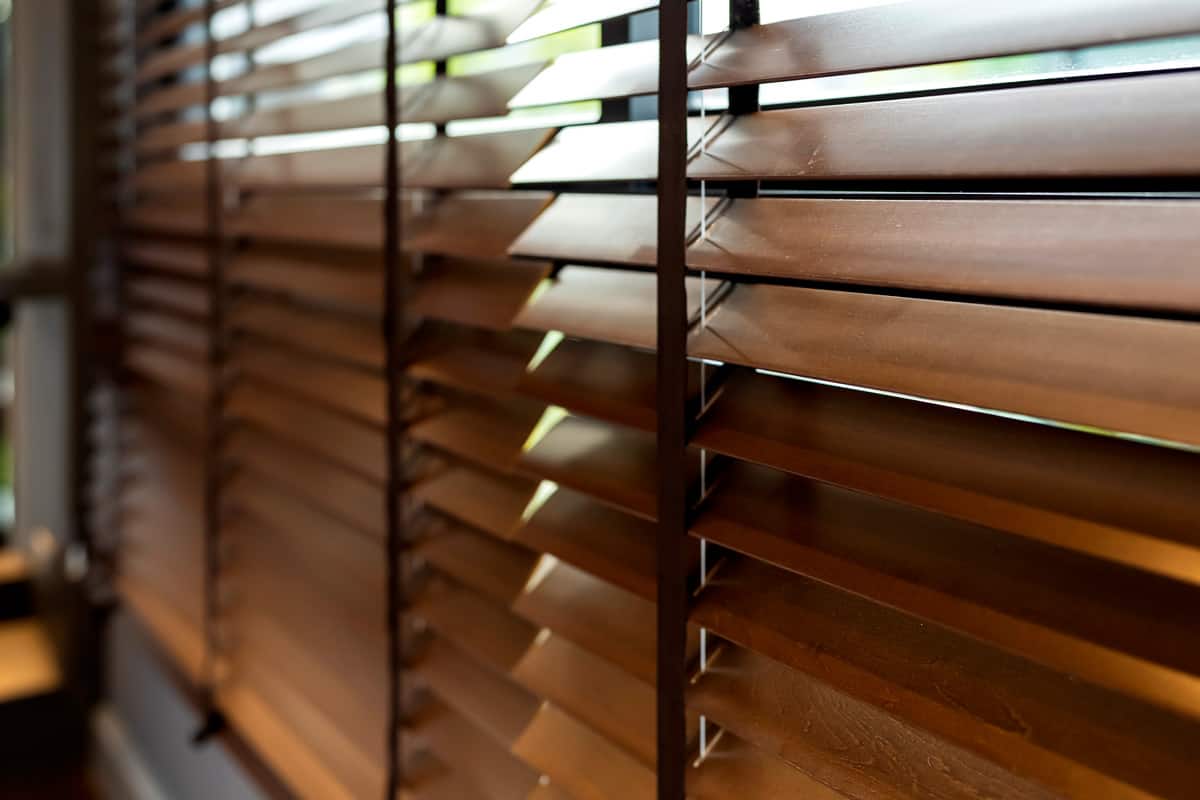
You can easily control the intensity of light coming into the room by tilting the blinds.
Energy efficiency - blinds can act as insulation and trap air against windows, making it easier to heat or cool the house.
Requires minimal spot cleaning and dusting can keep them clean.
Different styles and variations are available.
What Curtains Are
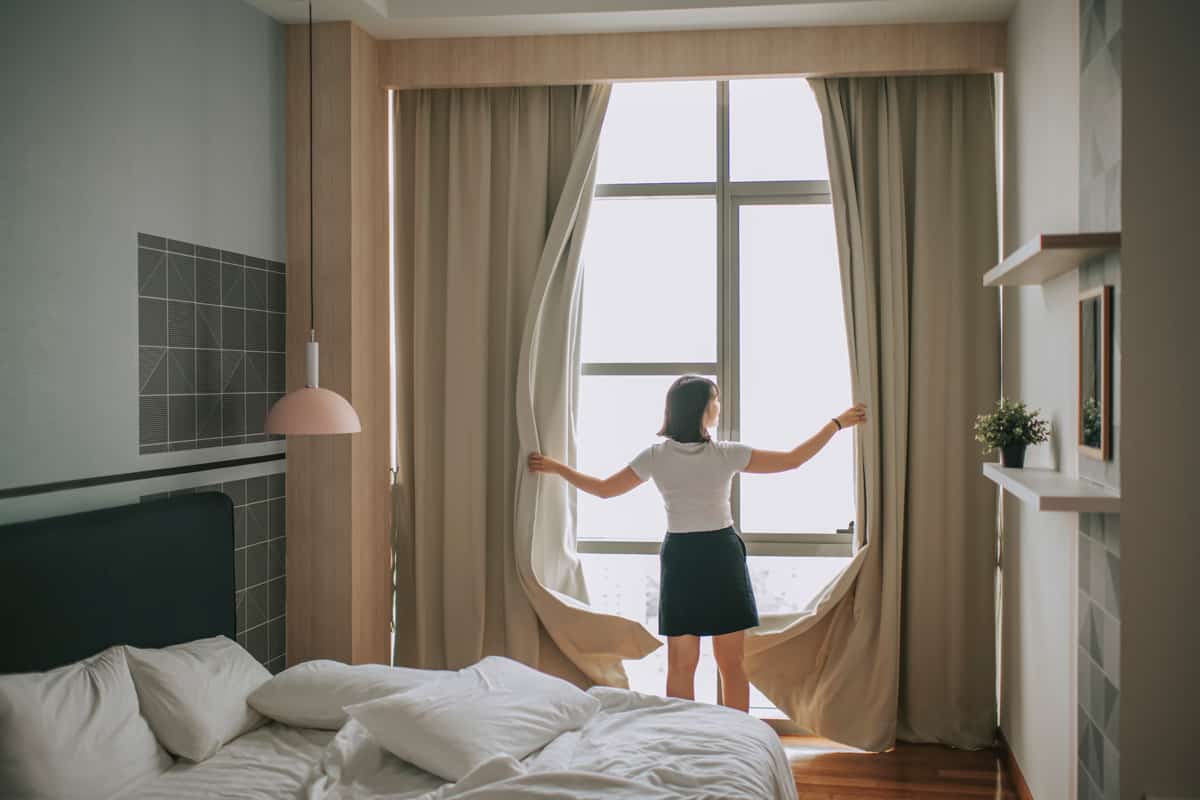
A curtain is a cloth covering that hangs over a window or other opening. Usually one of a pair at a window, curtains are moveable sideways along a rail. Additionally, they are typically constructed from lightweight materials like cotton and polyester. For seclusion and light, curtains may be simply opened and closed.
They are available in various forms, dimensions, hues, materials, and patterns. The way the pleats are constructed and how long the cloth is can also affect how they look. Based on the type of pleat, some common curtain styles are box pleat curtains, eyelet curtains, pencil pleat curtains, tab-top curtains, and rod-pocket curtains.
Drapes are different from curtains. While curtains are light and easygoing, drapes are thick and formal. Curtains are less expensive, easier to maintain and come in a wider range of materials and patterns than drapes.
Light Management
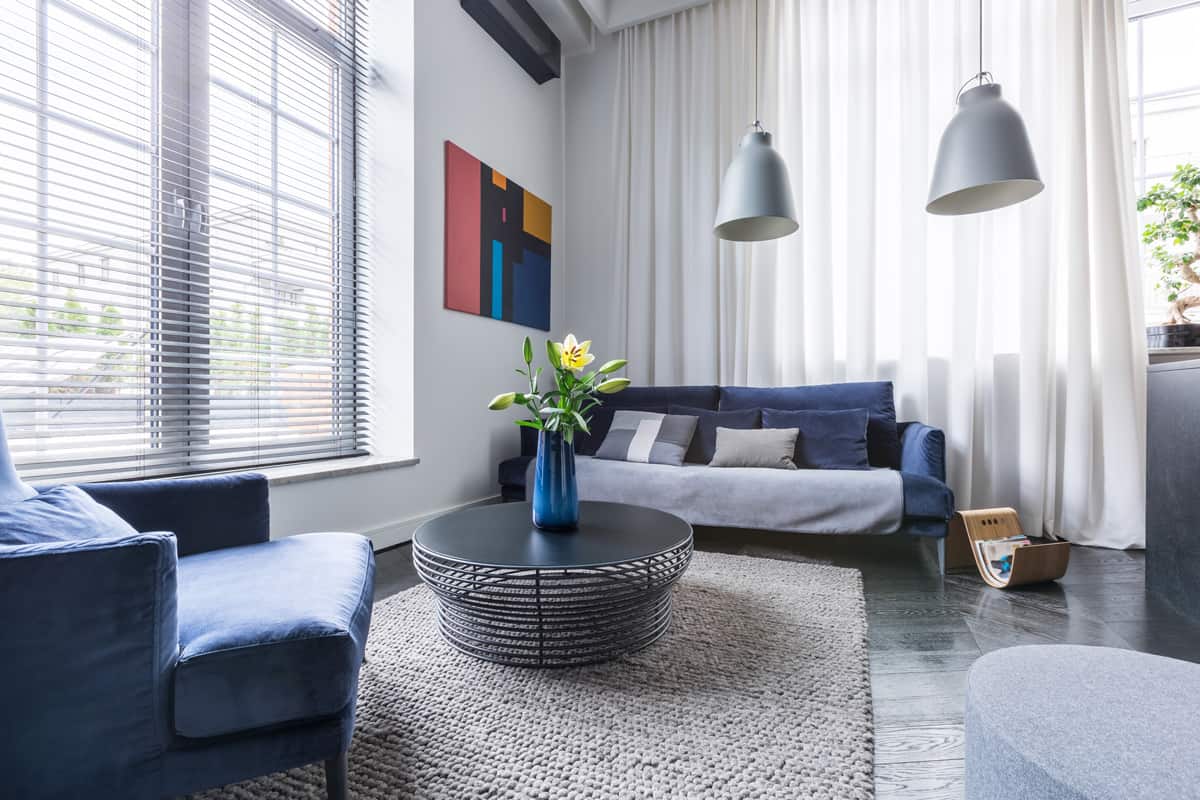
Since you can move the slats to get the right amount of light, blinds provide greater light control than drapes.
There are two techniques to limit the amount of light coming through blinds with slats positioned either vertically or horizontally (Venetian blinds). Vertical blinds can be shifted from one side to the other, and Venetian blinds can be raised and lowered by pulling the lift cord that hangs from the top.
The tilt wand, a long, stick-like device, can also be turned to rotate the slats and alter the angle at which light enters. Blinds provide extra options for light management, but because of their slatted construction, light can still penetrate, even when they are entirely closed. When curtains are drawn, practically blocking all light.
Check out this link to know more about curtains and how they protect furniture from the sun's harmful rays - Will Sheer Curtains Protect Furniture And Prevent.Fading?
Materials
Curtains are made from lightweight materials like cotton, polyester, and rayon, whereas blinds are made of wood, plastic, metal, or cloth.
Patterns and Designs
When compared to blinds, curtains come in a broader range of fabrics, designs, and colors.
Cost
Blinds are easier to make and install and use less time and resources. A professional can mount the blind, mount the brackets, and attach the mechanics that move the slats in 10 to 20 minutes. Your material expenses will go down if you use plastic blinds instead of wood or premium vinyl.
Because they require more time, materials, and labor to produce and install, curtains are typically more expensive. Installing level brackets above the window, attaching the rod to the bracket, hanging and securing the rod, and then styling the curtains will take an hour or more. Curtains made of cotton are more affordable than those of silk or linen.
Maintenance
While you can wash curtains, blinds only require periodic spot cleaning and general dusting. Curtain cleaning requires a little more effort. Use a pre-treatment solution for stains from the store or mix one part bleach with four parts water to remove dirt and stains. To avoid shrinking, it must be machine-washed and allowed to air dry.
Durability
Because curtains can fade over time, blinds may also be more durable. They are simpler to clean and less likely to be eaten by moths or other insects. Well-cared-for blinds frequently retain their aesthetic appeal for 15 years or longer. Plastic, vinyl, metal, or wood with a polymer coating are synthetic materials resistant to fading and stains.
They are also less prone to normal wear and tear because they are more rigid and tough than curtains. Curtains made of fabric, such as cotton, linen, velvet, or silk, are more likely to rip, stain, and mildew, thus they frequently need to be replaced within a decade.
Soundproofing and insulation
To keep heat out, curtains and blinds can improve your windows' overall insulation. This will reduce your utility costs.
However, curtains have been demonstrated to cut heat loss better during cold months, compared to the heat reduction you may get from blinds. Curtains do not have slats through which heat escapes. The thicker the curtains or blinds are, the more insulation they provide.
Conclusion
The choice between blinds and curtains ultimately comes down to the space. For instance, because they are easy to clean and moisture-resistant, blinds are more suited for bathrooms and kitchens. However, curtains are a beautiful accent for a living room, bedroom, or study.
Blinds and curtains can both block out exterior noise by absorbing it. But because they are thicker and don't have slats through which sound might enter, curtains—especially those made of heavyweight, densely woven materials like velvet or velour—perform better than blinds.


![living area in luxury apartment with a comfy sofa seats by the window, layered curtains, black out and sheer curtains, marble floor with space for household products display., Can Sheer Curtains Be Dyed [And How To]?](https://housepursuits.com/wp-content/uploads/2022/09/3D-REN1-1-600x400.jpg)
![Blank white closed shower curtain mock up, front view,. Empty toilet apartment with bath curtain mockup. Screen blind slip in indoor furniture template. - Do Shower Curtains Come In Different Lengths [And What Is Right For You]](https://housepursuits.com/wp-content/uploads/2022/10/BLANK-1-600x400.jpg)